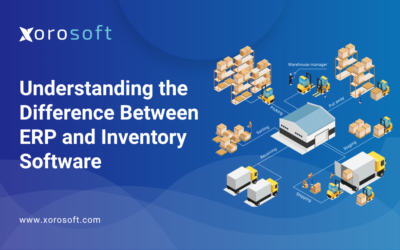
Introduction to Warehouse Management Systems (WMS)
In today’s fast-paced business environment, effective warehouse management is crucial for streamlining operations and ensuring customer satisfaction. A Warehouse Management System (WMS) is a powerful tool that enables businesses to optimize their inventory, improve order fulfillment, and enhance overall efficiency. By automating key processes and providing real-time visibility, a WMS can revolutionize the way businesses handle their warehouse operations.
Benefits of Implementing a Warehouse Management System
Implementing a WMS offers numerous benefits for businesses of all sizes. Firstly, a WMS provides accurate and real-time inventory tracking, allowing businesses to have a clear picture of their stock levels at any given time. This visibility enables better inventory planning, minimizing stockouts and reducing excess inventory. Additionally, a WMS enhances order fulfillment accuracy by utilizing barcode scanning and automated picking processes. This reduces the likelihood of errors and improves customer satisfaction.
Furthermore, a WMS optimizes warehouse space utilization by providing intelligent inventory slotting and putaway strategies. By maximizing space utilization, businesses can store more products and reduce the need for additional warehouse space. Moreover, a WMS improves labor productivity by automating manual tasks and providing efficient workflows. This allows warehouse staff to focus on value-added activities, such as quality control and customer service.
Understanding Inventory Management Systems
While a Warehouse Management System (WMS) focuses primarily on warehouse operations, an Inventory Management System (IMS) provides a broader scope to manage inventory throughout the supply chain. An IMS tracks inventory from the moment it arrives at the warehouse to its final destination, ensuring accurate stock levels and minimizing stockouts. It also facilitates demand planning, order management, and supplier collaboration.
An IMS enables businesses to forecast demand, plan inventory levels accordingly, and optimize order quantities. By automating these processes, businesses can reduce carrying costs and prevent excess inventory. Additionally, an IMS improves order accuracy and fulfillment by providing real-time visibility into inventory availability. This enables businesses to fulfill customer orders promptly and accurately.
Key Differences between WMS and Inventory Management Systems
While both Warehouse Management Systems (WMS) and Inventory Management Systems (IMS) contribute to efficient inventory management, there are key differences between the two. A WMS primarily focuses on managing warehouse operations, such as inventory tracking, order picking, and space utilization. On the other hand, an IMS provides end-to-end inventory management, encompassing activities from procurement to order fulfillment.
Another difference lies in the level of integration with other systems. A WMS is often integrated with other supply chain systems, such as Enterprise Resource Planning (ERP) systems, to exchange data seamlessly. This integration enables businesses to have a holistic view of their operations and make informed decisions. Conversely, an IMS may have broader integration capabilities, allowing businesses to synchronize inventory data across multiple channels and locations.
Factors to Consider when Determining if a WMS is the Right Fit for Your Business
Before deciding whether to implement a Warehouse Management System (WMS), businesses should consider several factors to determine the right fit for their operations. Firstly, businesses need to evaluate their current warehouse processes and identify pain points or areas for improvement. This analysis will help determine the specific functionalities and capabilities required from a WMS.
Secondly, businesses should consider their growth plans and scalability requirements. A WMS should be able to accommodate future business expansion without significant disruptions or the need for costly upgrades. Moreover, businesses should assess their budget and return on investment expectations. It is crucial to weigh the potential benefits of implementing a WMS against the associated costs.
Thirdly, businesses should evaluate the level of technical expertise available within their organization. Implementing a WMS requires technical knowledge and resources for system configuration, integration, and ongoing maintenance. If the in-house capabilities are limited, businesses may need to consider partnering with a WMS provider that offers implementation and support services.
Introduction to XoroWMS by Xorosoft
XoroWMS, developed by Xorosoft, is a leading Warehouse Management System (WMS) that empowers businesses to optimize their warehouse operations. XoroWMS offers a comprehensive set of features and capabilities designed to streamline inventory management, order fulfillment, and warehouse efficiency. With its user-friendly interface and robust functionality, XoroWMS is an ideal solution for businesses looking to enhance their warehouse operations.
Features and Capabilities of XoroWMS
XoroWMS offers a range of features and capabilities that enable businesses to achieve operational excellence in their warehouses. Firstly, XoroWMS provides real-time inventory tracking, allowing businesses to have accurate visibility into their stock levels at all times. This ensures efficient inventory planning and minimizes the risk of stockouts or overstocking.
Secondly, XoroWMS offers advanced order fulfillment capabilities, including barcode scanning and automated picking processes. By leveraging these features, businesses can improve order accuracy and reduce fulfillment errors, leading to increased customer satisfaction. XoroWMS also optimizes warehouse space utilization through intelligent inventory slotting and putaway strategies, maximizing storage capacity and reducing the need for additional space.
Moreover, XoroWMS enhances labor productivity by automating manual tasks and providing intuitive workflows. This enables warehouse staff to work more efficiently and focus on value-added activities. Additionally, XoroWMS offers seamless integration with other systems, such as ERP systems, enabling businesses to have a centralized view of their operations and make data-driven decisions.
Conclusion: Making the Right Choice for Your Business
Selecting the right warehouse management solution is a critical decision for businesses seeking to streamline their operations and achieve operational excellence. Whether it is a Warehouse Management System (WMS) or an Inventory Management System (IMS), businesses must carefully consider their specific needs, growth plans, and budgetary constraints. XoroWMS, developed by Xorosoft, offers a comprehensive set of features and capabilities to optimize warehouse operations. By booking a demo with Xorosoft, businesses can explore how XoroWMS can transform their warehouse management and drive sustainable growth. Make the right choice for your business and unlock the full potential of your warehouse operations with XoroWMS.









